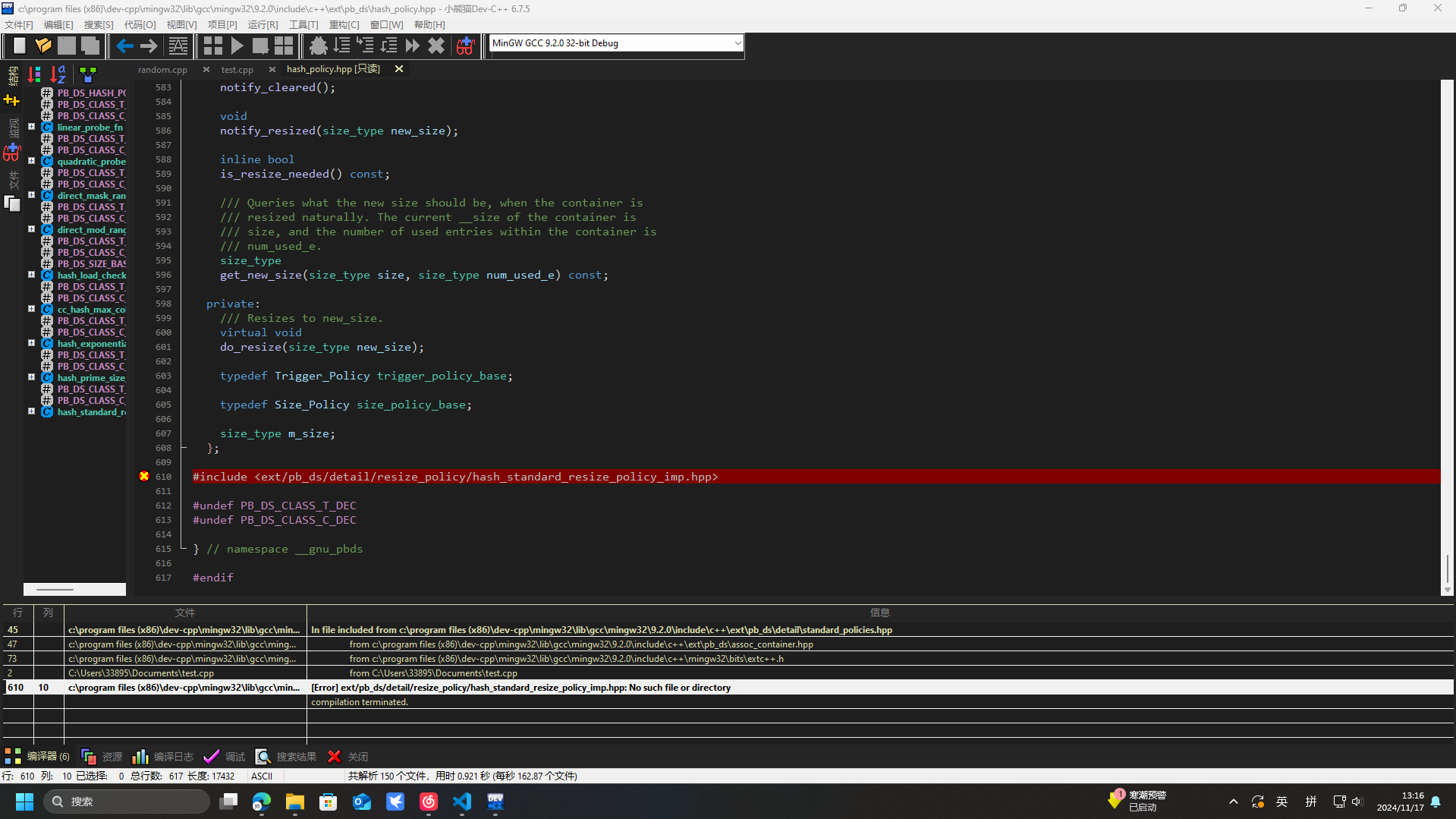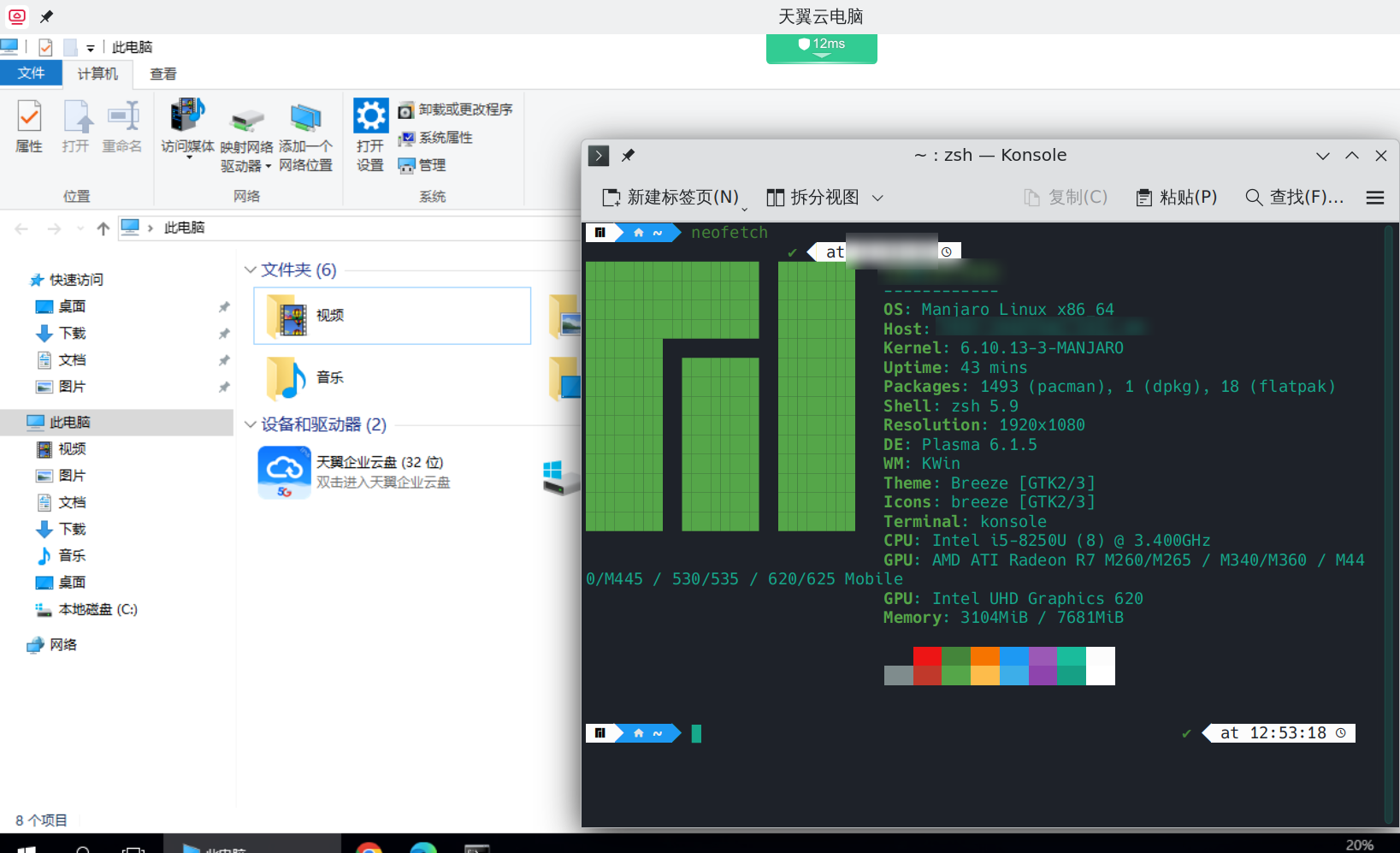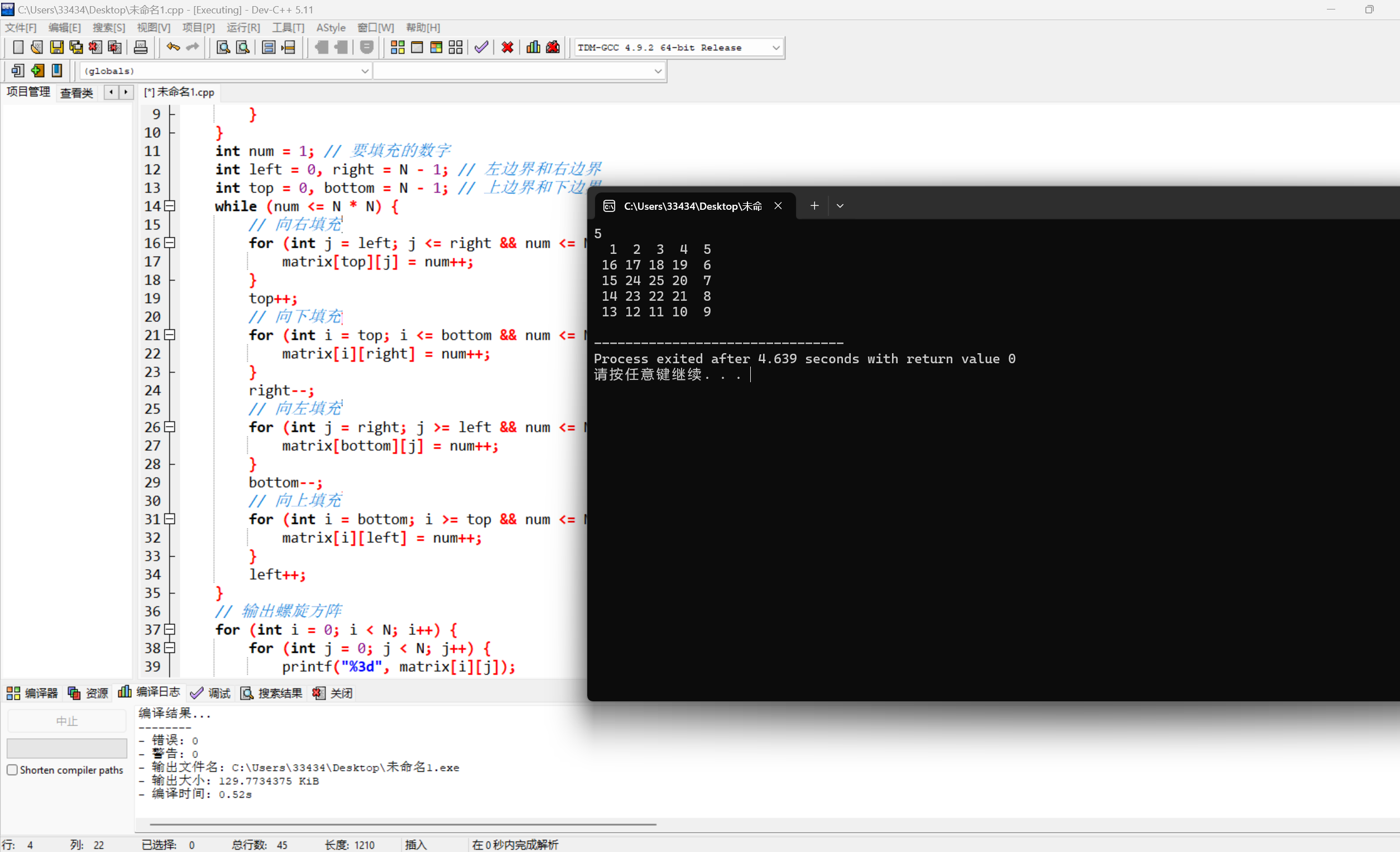先来看一道大家基本都能默写出来的题目:
您需要写一种数据结构(可参考题目标题),来维护一些数,其中需要提供以下操作:
- 插入一个数 \(x\)。
- 删除一个数 \(x\)(若有多个相同的数,应只删除一个)。
- 定义排名为比当前数小的数的个数 \(+1\)。查询 \(x\) 的排名。
- 查询数据结构中排名为 \(x\) 的数。
- 求 \(x\) 的前驱(前驱定义为小于 \(x\),且最大的数)。
- 求 \(x\) 的后继(后继定义为大于 \(x\),且最小的数)。
很显然,我么需要手写一个 Treap。就像这样:
//代码是盒的,别用qwq
#include<cstdio>
using namespace std;
#define MAXN 1000000
int f[MAXN],cnt[MAXN],value[MAXN],sons[MAXN][2],sub_size[MAXN],whole_size,root;
inline int qread(){int res=0,k=1;char c=getchar();while(!isdigit(c)){if(c=='-')k=-1;c=getchar();}while(isdigit(c)){res=(res<<1)+(res<<3)+c-48;c=getchar();}return res*k;
}
inline void S_Clear(int x){sons[x][0]=sons[x][1]=f[x]=sub_size[x]=cnt[x]=value[x]=0;
}
inline bool get_which(int x){return sons[f[x]][1]==x;
}
inline void update(int x){if (x){ sub_size[x]=cnt[x]; if (sons[x][0]) sub_size[x]+=sub_size[sons[x][0]]; if (sons[x][1]) sub_size[x]+=sub_size[sons[x][1]]; } return ;
}
inline void rotate(int x){int father=f[x],g_father=f[father],which_son=get_which(x);sons[father][which_son]=sons[x][which_son^1];f[sons[father][which_son]]=father;sons[x][which_son^1]=father;f[father]=x;f[x]=g_father;if(g_father){sons[g_father][sons[g_father][1]==father]=x;}update(father);update(x);
}
inline void splay(int x){for (int fa;fa=f[x];rotate(x)) if (f[fa]) rotate((get_which(x)==get_which(fa))?fa:x); root=x;
}
inline void insert(int x){if(!root){whole_size++;sons[whole_size][0]=sons[whole_size][1]=f[whole_size]=0;root=whole_size;sub_size[whole_size]=cnt[whole_size]++;value[whole_size]=x;return ;} int now=root,fa=0;while(1){if(x==value[now]){cnt[now]++;update(now);update(fa);splay(now);break;}fa=now;now=sons[now][value[now]<x];if(!now){whole_size++;sons[whole_size][0]=sons[whole_size][1]=0;f[whole_size]=fa;sub_size[whole_size]=cnt[whole_size]=1;sons[fa][value[fa]<x]=whole_size;value[whole_size]=x;update(fa);splay(whole_size);break; }}}
inline int find_num(int x){ int now=root;while(1){if(sons[now][0]&&x<=sub_size[sons[now][0]])now=sons[now][0];else {int temp=(sons[now][0]?sub_size[sons[now][0]]:0)+cnt[now];if(x<=temp)return value[now];x-=temp;now=sons[now][1];}}
}inline int find_rank(int x){int now=root,ans=0; while(1){ if (x<value[now]) now=sons[now][0]; else{ ans+=(sons[now][0]?sub_size[sons[now][0]]:0); if (x==value[now]){ splay(now); return ans+1; } ans+=cnt[now]; now=sons[now][1]; } }
}
inline int find_pre(){int now=sons[root][0];while(sons[now][1])now=sons[now][1];return now;
}
inline int find_suffix(){int now=sons[root][1];while(sons[now][0])now=sons[now][0];return now;
}
inline void my_delete(int x){int hhh=find_rank(x);if (cnt[root]>1){cnt[root]--; update(root); return;} if (!sons[root][0]&&!sons[root][1]) {S_Clear(root);root=0;return;} if (!sons[root][0]){ int old_root=root; root=sons[root][1];f[root]=0; S_Clear(old_root); return; } else if (!sons[root][1]){ int old_root=root; root=sons[root][0]; f[root]=0; S_Clear(old_root); return; } int left_max=find_pre(),old_root=root; splay(left_max); sons[root][1]=sons[old_root][1]; f[sons[old_root][1]]=root; S_Clear(old_root); update(root);
}int main(){int m,num,be_dealt;cin>>m;for(int i=1;i<=m;i++){num=qread();be_dealt=qread();switch(num){case 1:insert(be_dealt);break;case 2:my_delete(be_dealt);break;case 3:printf("%d\n",find_rank(be_dealt));break;case 4:printf("%d\n",find_num(be_dealt));break;case 5:insert(be_dealt);printf("%d\n",value[find_pre()]);my_delete(be_dealt);break;case 6:insert(be_dealt);printf("%d\n",value[find_suffix()]);my_delete(be_dealt);break;}}return 0;
}
实际上写出这么多的代码需要极强的码力,而且容易出错在考场上红温。
直到有一天,你学会发布了这篇文章:

下划线开头的函数包括__gcd等,同时还包括一个神秘的库叫做 __gnu_pbds。这个库里面包括了很多数据结构,其中甚至包括平衡树,除此之外还有类似于哈希之类的东西,很大程度上可以减轻写代码的负担,但是注意,如果背不对模板,不要尝试在考场上使用。
先上代码:
#include<bits/stdc++.h>
#include<bits/extc++.h>
using namespace __gnu_pbds;
//using namespace std;
inline int read()
{int x=0,f=1;char ch=getchar();while(ch<'0'||ch>'9'){if(ch=='-')f=-1;ch=getchar();}while(ch>='0' && ch<='9')x=x*10+ch-'0',ch=getchar();return x*f;
}
inline void write(int x)
{if(x<0)putchar('-'),x=-x;if(x>9)write(x/10);putchar(x%10+'0');return;
}
const int inf = INT_MAX;
tree<std::pair<int,int>,null_type,std::less<std::pair<int,int> >,rb_tree_tag,tree_order_statistics_node_update>rbt;
int main()
{int n=read();for(int i=1;i<=n;i++){int opt=read(),val=read();if(opt==1){rbt.insert(std::make_pair(val,i));}else if(opt==2){rbt.erase(rbt.lower_bound(std::make_pair(val,0)));}else if(opt==3){write(rbt.order_of_key(std::make_pair(val,0))+1);putchar(10);}else if(opt==4){auto it=rbt.find_by_order(val-1);write((*it).first);putchar(10);}else if(opt==5){auto it=rbt.lower_bound(std::make_pair(val,0));write((*(--it)).first);putchar(10);}else{auto it=rbt.upper_bound(std::make_pair(val,inf));write((*(it)).first);putchar(10);}}return 0;
}
注意:上面的代码如果在devcpp里面打开是百分之百无法编译的,如图:

这个时候,如果是windows系统使用devcpp建议把devc++自带的mingw64编译器添加到系统环境变量后直接在cmd里面用这个命令编译:
g++ <yourfilename>.cpp -o <the_name_of_exe_file> -O2 -std=c++14
接着说模板的事情。
除了rb_tree之外平板电视里面还有treap和基于vector实现的平衡树,但是两种我都不建议使用,被卡过就知道为啥了。
除此之外还有哈希有关的东西,这样写,和map类似
cc_hash_table<int,bool> h;
gp_hash_table<int,bool> h;
其中下面那个稍微快一点。操作支持find操作和[]。然而这个好东西可以把 \(O(nlogn)\) 的复杂度直接拽到 \(O(n)\)。在考场上真的可以救你一命。

但是特别注意,使用了这个东西就不太建议引入using namespace std;了,因为可能会因为函数名称冲突见祖宗,建议实际考试或者模拟赛的时候在linux下编译一下试试再提交。







